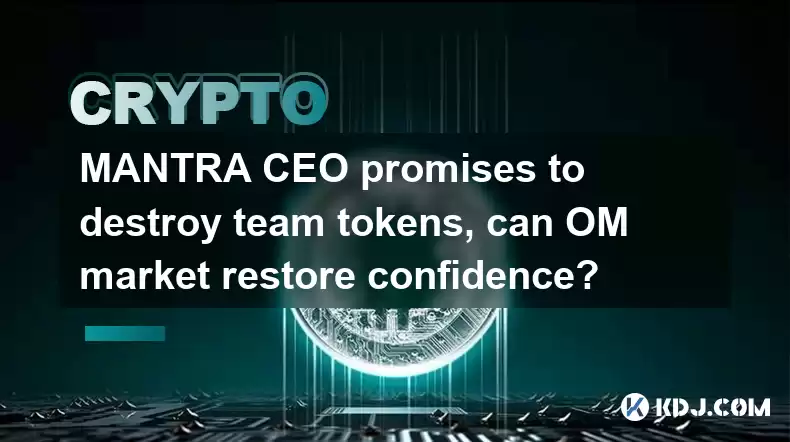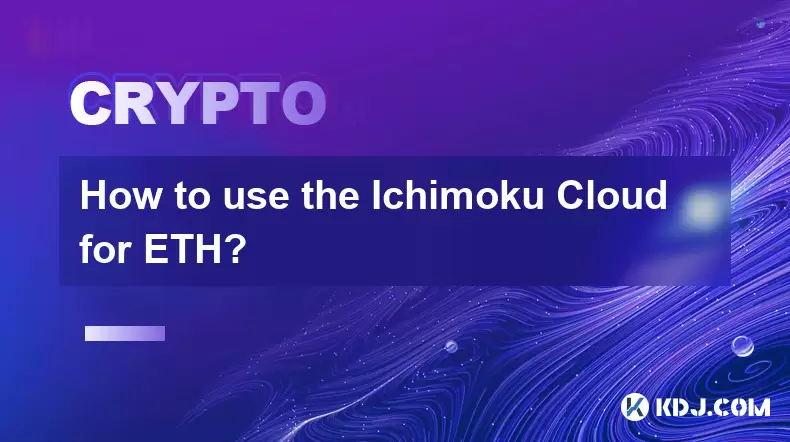-
 Bitcoin
Bitcoin $118800
-0.22% -
 Ethereum
Ethereum $3677
-4.47% -
 XRP
XRP $3.504
-3.02% -
 Tether USDt
Tether USDt $1.000
-0.01% -
 Solana
Solana $200.2
2.87% -
 BNB
BNB $762.2
-2.24% -
 USDC
USDC $0.9998
-0.02% -
 Dogecoin
Dogecoin $0.2644
-5.03% -
 Cardano
Cardano $0.8700
-5.51% -
 TRON
TRON $0.3128
-1.32% -
 Hyperliquid
Hyperliquid $43.99
-7.14% -
 Stellar
Stellar $0.4609
-5.85% -
 Sui
Sui $3.895
-3.54% -
 Chainlink
Chainlink $19.14
-5.01% -
 Hedera
Hedera $0.2680
-6.05% -
 Avalanche
Avalanche $24.99
-4.45% -
 Bitcoin Cash
Bitcoin Cash $518.6
-2.87% -
 Shiba Inu
Shiba Inu $0.00001507
-5.13% -
 Litecoin
Litecoin $115.0
-3.02% -
 Toncoin
Toncoin $3.444
2.27% -
 UNUS SED LEO
UNUS SED LEO $8.991
0.02% -
 Polkadot
Polkadot $4.400
-5.50% -
 Uniswap
Uniswap $10.43
-8.70% -
 Ethena USDe
Ethena USDe $1.001
0.01% -
 Monero
Monero $325.9
0.39% -
 Pepe
Pepe $0.00001372
-4.14% -
 Bitget Token
Bitget Token $4.811
-3.32% -
 Dai
Dai $1.000
0.00% -
 Aave
Aave $306.7
-8.06% -
 Bittensor
Bittensor $434.2
0.25%
MANTRA CEO promises to destroy team tokens, can OM market restore confidence?
MANTRA's CEO aims to boost OM market confidence by destroying team tokens, a move that involves careful steps and could impact supply and demand dynamics.
Apr 21, 2025 at 08:28 am

The recent announcement from the CEO of MANTRA about destroying team tokens has sparked a wave of discussions within the cryptocurrency community. This move is seen as a strategic effort to restore confidence in the OM market, which has been facing various challenges. The decision to burn team tokens is not just a simple action; it involves a series of steps and considerations that are crucial for understanding the potential impact on the market.
Understanding Team Token Destruction
Team token destruction, often referred to as token burning, is a process where a certain amount of tokens are permanently removed from circulation. This action can lead to a reduction in the total supply of tokens, which, in theory, could increase the value of the remaining tokens due to the principles of supply and demand. In the case of MANTRA, the CEO's promise to destroy team tokens is a significant move aimed at signaling to the market that the team is committed to the project's long-term success and not just their short-term gains.
The Process of Token Burning
The process of burning team tokens involves several detailed steps. Here’s how it typically works:
- Identify the Tokens to be Burned: The first step is to identify the specific tokens that are allocated to the team. These tokens are usually held in a separate wallet designated for team members.
- Authorize the Burn: The team must then obtain the necessary authorization to proceed with the burn. This often involves a vote or consensus among key stakeholders or a decision from the CEO.
- Execute the Burn: Once authorized, the tokens are sent to a burn address. A burn address is a special type of wallet from which tokens cannot be retrieved. This effectively removes the tokens from circulation.
- Verify and Announce: After the tokens are burned, the transaction must be verified on the blockchain. The team then announces the completion of the burn to the community, often providing the transaction hash as proof.
Impact on Market Confidence
The announcement of team token destruction can have a significant impact on market confidence. When a team decides to burn their tokens, it sends a strong message to investors and the community that the team is focused on the project's success rather than their personal gain. This can help to restore trust among investors who may have been skeptical about the team's intentions.
Historical Precedents and Market Reactions
There have been several instances in the cryptocurrency market where token burning has led to positive market reactions. For example, when Binance announced its quarterly token burns, the price of BNB often saw a significant increase. Similarly, if MANTRA successfully executes its team token destruction, it could potentially lead to a similar positive reaction in the OM market. However, it's important to note that market reactions can vary, and other factors such as overall market sentiment and economic conditions also play a role.
Challenges and Considerations
Despite the potential benefits, there are several challenges and considerations that MANTRA must address. Transparency is crucial; the team must clearly communicate the details of the burn, including the number of tokens being destroyed and the rationale behind the decision. Additionally, the team must ensure that the burn is executed in a way that is verifiable and auditable by the community.
Another consideration is the timing of the burn. If the market is already experiencing high volatility, the announcement of a token burn could either exacerbate the situation or help stabilize it, depending on how it is perceived by investors. The team must carefully consider the timing to maximize the positive impact on market confidence.
Community and Investor Response
The response from the community and investors will be critical in determining the success of the team token destruction. Engagement with the community through forums, social media, and other platforms can help gauge sentiment and address any concerns. The team should be prepared to answer questions and provide additional information as needed to ensure that the community understands and supports the decision.
Technical Aspects of Token Burning
From a technical standpoint, executing a token burn involves several important considerations. The team must ensure that the burn address used is indeed a non-recoverable address. Additionally, the transaction must be properly formatted and executed to ensure that the tokens are effectively removed from circulation. Any technical errors could undermine the entire effort and lead to further loss of confidence.
Regulatory and Legal Implications
There may also be regulatory and legal implications to consider. Depending on the jurisdiction, the act of burning tokens could be subject to certain regulations or require specific disclosures. The team must ensure that they are in compliance with all relevant laws and regulations to avoid any potential legal issues.
Monitoring and Reporting
After the token burn, it is important for the team to continue monitoring the market and reporting on the impact of the burn. This includes tracking the price of OM, trading volumes, and other key metrics to assess whether the burn has achieved its intended effect. Regular updates to the community can help maintain transparency and keep investors informed.
Frequently Asked Questions
Q: How can investors verify that the team tokens have been destroyed?
A: Investors can verify the destruction of team tokens by checking the transaction hash provided by the team on the blockchain explorer. This allows them to see that the tokens have been sent to a non-recoverable burn address.
Q: What are the potential risks of team token destruction?
A: One potential risk is that if the market does not respond positively, it could lead to further loss of confidence. Additionally, if the burn is not executed properly, it could result in technical errors that undermine the effort.
Q: Can team token destruction be reversed?
A: No, once tokens are sent to a burn address, they cannot be recovered. This is why it is crucial for the team to ensure that the burn is executed correctly.
Q: How often should a project like MANTRA conduct token burns?
A: The frequency of token burns can vary depending on the project's goals and the market's response. Some projects conduct regular burns, while others may do so on an as-needed basis to address specific market conditions or to achieve certain objectives.
Disclaimer:info@kdj.com
The information provided is not trading advice. kdj.com does not assume any responsibility for any investments made based on the information provided in this article. Cryptocurrencies are highly volatile and it is highly recommended that you invest with caution after thorough research!
If you believe that the content used on this website infringes your copyright, please contact us immediately (info@kdj.com) and we will delete it promptly.
- XRP, Bitcoin, Ripplecoin: Navigating the Crypto Landscape in 2025
- 2025-07-22 20:30:13
- Cardano Ecosystem Watch: Can PayFi Token Remittix Trigger an ADA Overtake?
- 2025-07-22 20:50:13
- JasmyCoin Price Forecast: Chart Analysis Points to Potential Surge
- 2025-07-22 20:55:13
- Trump, Bitcoin, and Altcoins: A New York Minute on Crypto's Political Play
- 2025-07-22 21:00:13
- Shiba Inu, XRP, and Little Pepe: Navigating the Meme Coin Mania in NYC
- 2025-07-22 21:30:13
- Bitcoin's Role in IntelBroker's Takedown: A New Era of Crypto Crime Enforcement
- 2025-07-22 21:10:15
Related knowledge

What is Chainlink (LINK)?
Jul 22,2025 at 02:14am
Understanding Chainlink (LINK): The Decentralized Oracle NetworkChainlink is a decentralized oracle network designed to bridge the gap between blockch...

What is Avalanche (AVAX)?
Jul 22,2025 at 08:35am
What is Avalanche (AVAX)?Avalanche (AVAX) is a decentralized, open-source blockchain platform designed to support high-performance decentralized appli...

What is Polkadot (DOT)?
Jul 19,2025 at 06:35pm
Understanding the Basics of Polkadot (DOT)Polkadot (DOT) is a multi-chain network protocol designed to enable different blockchains to transfer messag...

What is Monero (XMR)?
Jul 21,2025 at 10:07am
What is Monero (XMR)?Monero (XMR) is a decentralized cryptocurrency designed to provide enhanced privacy and anonymity for its users. Unlike Bitcoin a...

How to add indicators to Ethereum chart on TradingView?
Jul 19,2025 at 07:15am
What Is an Ethereum Chart on TradingView?The Ethereum chart on TradingView is a visual representation of the price movement of Ethereum (ETH) over a s...

How to use the Ichimoku Cloud for ETH?
Jul 18,2025 at 09:56pm
Understanding the Ichimoku Cloud and Its ComponentsThe Ichimoku Cloud, also known as Ichimoku Kinko Hyo, is a versatile technical analysis tool that p...

What is Chainlink (LINK)?
Jul 22,2025 at 02:14am
Understanding Chainlink (LINK): The Decentralized Oracle NetworkChainlink is a decentralized oracle network designed to bridge the gap between blockch...

What is Avalanche (AVAX)?
Jul 22,2025 at 08:35am
What is Avalanche (AVAX)?Avalanche (AVAX) is a decentralized, open-source blockchain platform designed to support high-performance decentralized appli...

What is Polkadot (DOT)?
Jul 19,2025 at 06:35pm
Understanding the Basics of Polkadot (DOT)Polkadot (DOT) is a multi-chain network protocol designed to enable different blockchains to transfer messag...

What is Monero (XMR)?
Jul 21,2025 at 10:07am
What is Monero (XMR)?Monero (XMR) is a decentralized cryptocurrency designed to provide enhanced privacy and anonymity for its users. Unlike Bitcoin a...

How to add indicators to Ethereum chart on TradingView?
Jul 19,2025 at 07:15am
What Is an Ethereum Chart on TradingView?The Ethereum chart on TradingView is a visual representation of the price movement of Ethereum (ETH) over a s...

How to use the Ichimoku Cloud for ETH?
Jul 18,2025 at 09:56pm
Understanding the Ichimoku Cloud and Its ComponentsThe Ichimoku Cloud, also known as Ichimoku Kinko Hyo, is a versatile technical analysis tool that p...
See all articles

























































































